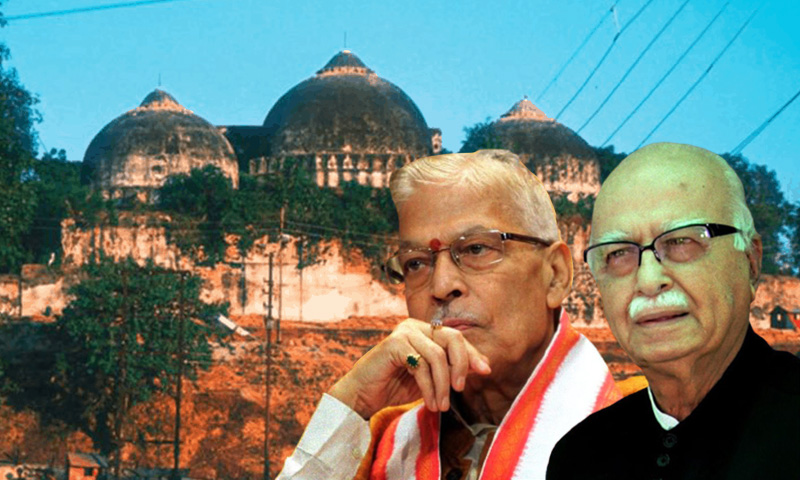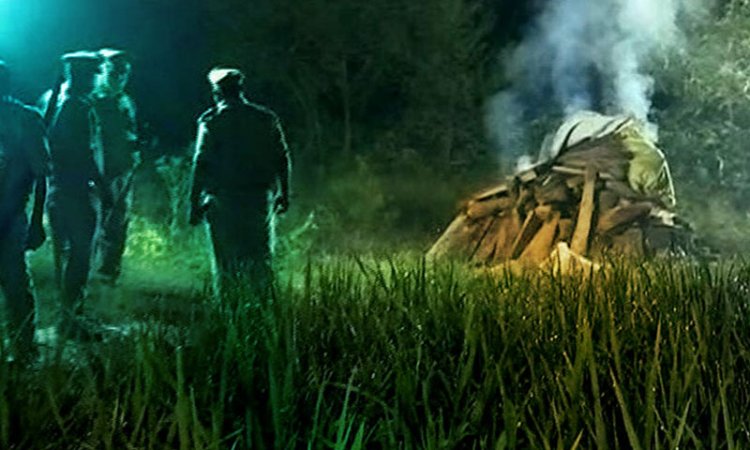#I Can't Breathe: Governance By Annihilation and By Hate
Kalpana Kannabiran
3 Oct 2020 7:21 PM IST
Speaking the Constitution is speaking dissent in our times.
A nineteen-year-old Dalit woman was assaulted in the most brutal manner and killed by Thakurs from the same village known to her and her family. When her mother found her, she was naked, paralysed with indescribable physical injuries which included deep injuries on her tongue – to silence her from testifying to the attack on her? Yet, in spite of the grave harms, violent...
A nineteen-year-old Dalit woman was assaulted in the most brutal manner and killed by Thakurs from the same village known to her and her family. When her mother found her, she was naked, paralysed with indescribable physical injuries which included deep injuries on her tongue – to silence her from testifying to the attack on her? Yet, in spite of the grave harms, violent humiliation and deep trauma, she made a statement naming the perpetrators. She, a young Dalit woman from a landless Valmiki family, whose only protection against chronic anticipated assault and humiliation by the Thakur perpetrators and their henchmen, was to stay indoors, never alone, and step out occasionally, never alone. Yet, even this did not give her the guarantee of bare life. Incarceration by caste and annihilation by caste. If we do not annihilate caste, caste will annihilate us.
Can we even begin to understand Article 21 guarantees from the standpoint of this experience? We know the young woman from Hathras is not the first. Khairlanji, the case of the law student from Ernakulam in Kerala, the young girls in Badaun… the roads of this country are strewn with the bodies of Dalit women, young and old, and the bodies of Dalit men. Without multiplying examples of targetted structural violence and assault – for that is a task that is impossible to complete, given its sheer magnitude – our collective experience as a people sworn to the Constitution of India in Hathras in 2020 like elsewhere has been one of occupation of Dalit, Adivasi and Muslim homes, neighbourhoods and homelands; of violent death and collective violence; of desecration of places of worship; of unimaginable suffering; of humiliation as a condition of existence; of the anticipation of violence and murder, and of the trauma of silencing. The first expression of the 'right to maim' as Jasbir Puar poignantly calls it, in this instance is the brutal seizure of speech by the Thakur-State.
In a country with people who gave to themselves a constitution that affirms justice, equality, fraternity, freedom of faith, worship, and conscience, liberty, dignity, unity, integrity, we have a strident, violent, unabashedly partisan, elected government. We have officers of the government participating in and bolstering genocidal speech by curtailing the invocation of the constitution – by 'pouring molten lead on the tongues' of Dalits ripping apart Article 17 guarantees. Witness the conduct of the District Magistrate and the police after the death of the victim. Witness the fortification of the village against 'outsiders' reaching out to her family, while the perpetrators and their families roam free within the village. The murderous assault on the young woman is held in place by the continuing assault on and humiliation of the family – by the dominant Thakurs and officers of government now no longer distinguishable from each other in speech or conduct.
This humiliation reaches its most unbearable limit in the manner in which her family was refused the right to her mortal remains – her body broken, wounded and lacerated, but it was what remained of her. Annihilation of the person, the body and the claim to justice. 'No evidence of rape', says the police without any investigation into the crimes that killed her. The right to preserve her body, and seek further investigation into the wounds she suffered was denied, and the evidence she carried on her person destroyed in the dead of night by the police. We know by now that a forensic report is rarely a truthful record, especially when the case concerns crimes of dominance and crimes against humanity. We saw the Muktadar Commission that enquired into the gangrape of a Muslim woman and the custodial murder of her husband in Hyderabad in 1978 record that the medical and forensic reports had been tampered with to destroy evidence against the accused policemen. In the case of the custodial death of Budhan Sabar in West Bengal in 1998, the Calcutta High Court ordered a videographed second post-mortem that revealed the cause of death as custodial violence and ordered a compensation to Budhan's wife. The disposal of Hathras victim's body therefore is not merely disrespect to the dead person and disregard of the custom of her family in the matter of death rituals. It is destruction of evidence that the Hathras police are guilty of – and there is a record of this destruction. The threats, forced confinement in their homes and fortification are forms of illegal custody that the family has been subjected to – there were armed police and officers of state actively preventing the family from moving out and anyone from meeting them. They were incarcerated in their homes and threatened with greater harm if they did not change their testimonies.
The Allahabad High Court's suo motu notice is welcome, and we pin citizen hope on the court as a place that will quell our collective anger at this travesty of justice. The court must name the officers on duty for the fifteen days between the assault and their suspension and order them to appear before the court by name. Their suspension should not by default become a release from the burden of appearing before the Court. What is required as a first step in reparation is the public acknowledgment by the court of the multiple ways in which the constitution has been torn to shreds. This is the only route to dignity – for citizens of this country and the courts alike.
Our still raw memories of the brutal violence by the UP police on unarmed anti-CAA resisters, fueled by the state, has now been followed up with the declaration by the CBI court in Lucknow that there is 'no evidence' against those accused of the large-scale violence, riots, arson, looting and demolition of the Babri Masjid in December 1992, with the elected Chief Minister tweeting 'Satyameva Jayate'. That a top BJP elder escaped conviction and heaved the burden off his ageing chest with a 'Jai Shri Ram' is different in its substantive meanings (although his role in the demolition and the violence that preceded and followed it must never be forgotten). And yet, a distinction must be drawn between those accused in the case and the Chief Minister concurring with the court judgment in which he was neither an accused nor a party.

This is not the first time in our lives as witnesses to state impunity that we have seen complicity in collective/mass violence. And yet, we must insist that this brazen declaration of partisan rule and impunity be signposted. Given the scale of violence, and the volume of documentary and visual evidence that is available to courts, this is a case that must go up in appeal to the High Court and the Supreme Court and be tried afresh. Through his tweet, the Chief Minister of UP, a constitutional authority, has seized speech from us all, by foreclosing the options to appeal or ask for retrial. It is an infringement of Article 19 rights of citizens of this country in their intersections with Article 21 and the Preamble. We just need to look around us to see what havoc this impunity has already triggered.
Clearly, the black letter understanding of the constitution is woefully inadequate in our situation. It is our responsibility as citizens to alert courts to the incarceration of the constitution – it is not four corners of the law any more. The constitution, and by that token, every court in this country and every judicial office is today in peril. There are no guarantees for the expression of judicial dissent –and indeed no guarantee that this violent seizure of speech will not very soon affect judicial dissent. One experience of this silencing is the decision of the CBI court. There is an even graver harm lurking around the corner – the possibility of the chilling of non-compliant judicial speech that these times signal.
Where do we go as citizens? Who do we appeal to? If our routes to redress are blocked by caste and hate, what are courts going to do to enforce the 'triadic ethical framework' of the constitution – the Preamble, fundamental rights and directive principles of state policy? Or are we going to sit back fiddling with little reliefs while the constitution itself is annihilated – not merely reduced to a farce, as Babasaheb Ambedkar warned?
When ADM Jabalpur happened, we waited forty years for the nine-judge bench of the Puttaswamy court to declare: 'When histories of nations are written and critiqued, there are judicial decisions at the forefront of liberty. Yet others have to be consigned to the archives, reflective of what was, but should never have been' (para 121). This, our present, is a moment that should never have been. If we let this moment pass, we risk the peril of wiping out the constitution and the courts that are meant to breathe life into it. The difference between this moment and the one we so proudly consigned to ignominy is that we will not bequeath a Puttaswamy moment to our future generations? The choice is ours to make. It is a choice.
(Kalpana Kannabiran is Professor & Director at Council for Social Development, Hyderabad)


